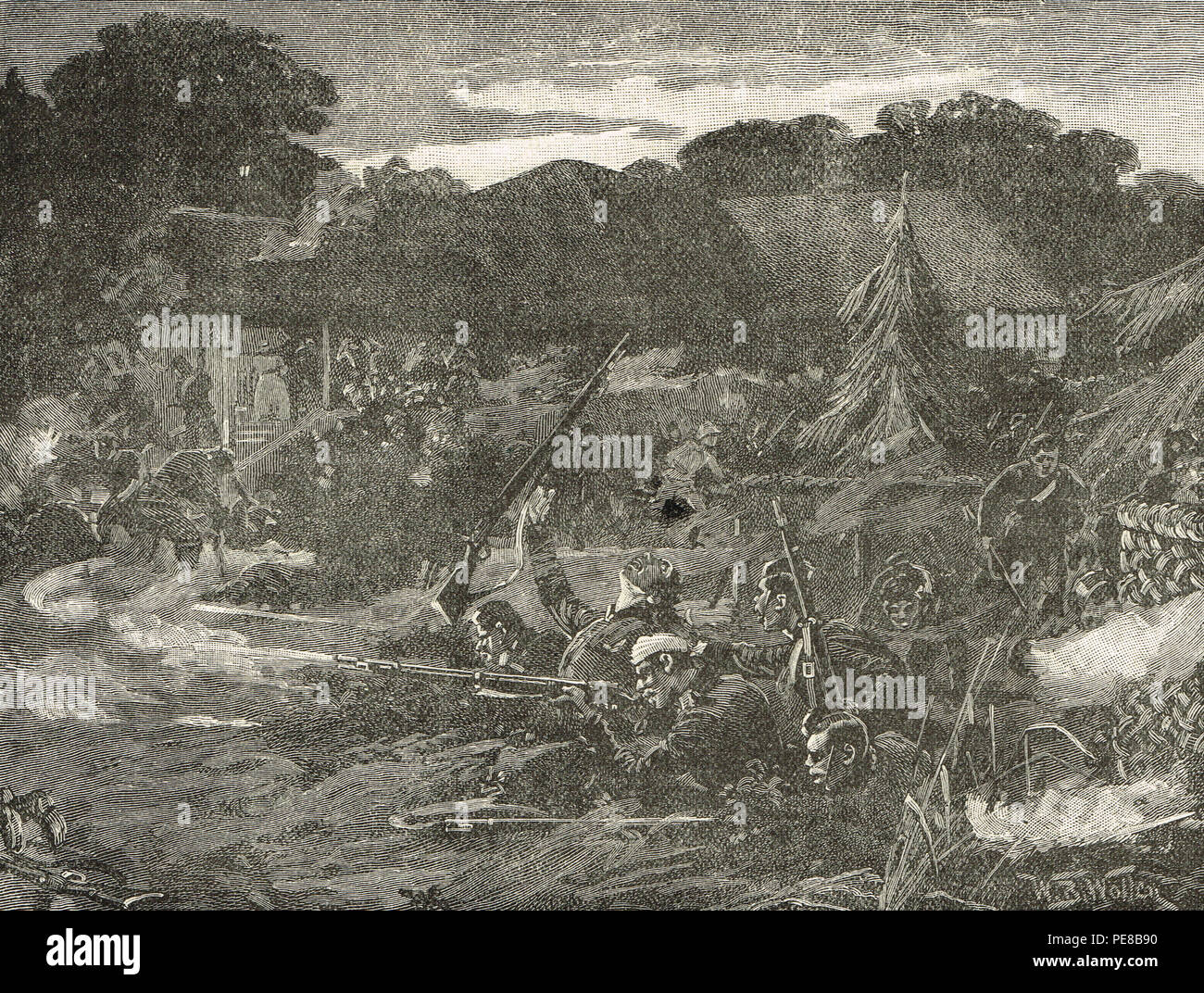Attack on the British Residency at Manipur, 24 March 1891

Image details
Contributor:
Historical Images Archive / Alamy Stock PhotoImage ID:
PE8B90File size:
22.5 MB (3 MB Compressed download)Releases:
Model - no | Property - noDo I need a release?Dimensions:
3223 x 2436 px | 27.3 x 20.6 cm | 10.7 x 8.1 inches | 300dpiDate taken:
1901More information:
This image could have imperfections as it’s either historical or reportage.
Illustration by William Barnes Wollen (1857–1936) from Cassell's History of England, pub circa 1901. Info from wiki: The British decided to recognise Juvraj Kulachandra Singh as Raja, and to send a military expedition of 400 men to Manipur to punish Senapati Tikendrajit Singh as the main person responsible for the unrest and the dynastic disturbances. This action and the violent events that followed are known in British annals as the 'Manipur Expedition, 1891', [4] while in Manipur they are known as the 'Anglo-Manipur War of 1891'. The British attempt to remove Tikendrajit from his position as military commander (Senapati) and arrest him on 24 March 1891 caused a great stir. The British Residency in Imphal was attacked and the Chief Commissioner for Assam J.W. Quinton, Col. Sken and three other British officials were murdered. In the middle of the unrest Ethel St Clair Grimwood, the widow of Frank St Clair Grimwood, the killed British Resident, successfully led a party of surviving sepoys out of Manipur to Cachar.[5] Without much delay, a 5, 000 strong punitive expedition was sent against Manipur on 27 April 1891. Three British columns entered Manipur from British Burma, Cachar and the Naga Hills, which after several skirmishes with the 3, 000 men strong Manipuri army, managed to pacify the kingdom. Following the British attack Senapati Tikendrajit and young king Kulachandra fled, but were captured. The Senapati and those Manipuris who had been involved in the killing of the British officers were tried and hanged, while the deposed King Kulachandra and other leaders of the rebellion were sent to the Cellular Jail in the Andaman Islands. At this time, and until and 22 September 1891, Manipur was briefly annexed to British India by virtue of the doctrine of lapse. On 22 September 1891 when Meidingngu Churachand (Churachandra), a 5-year-old boy, was put on the throne, power was restored nominally to the Manipuri crown over the state.